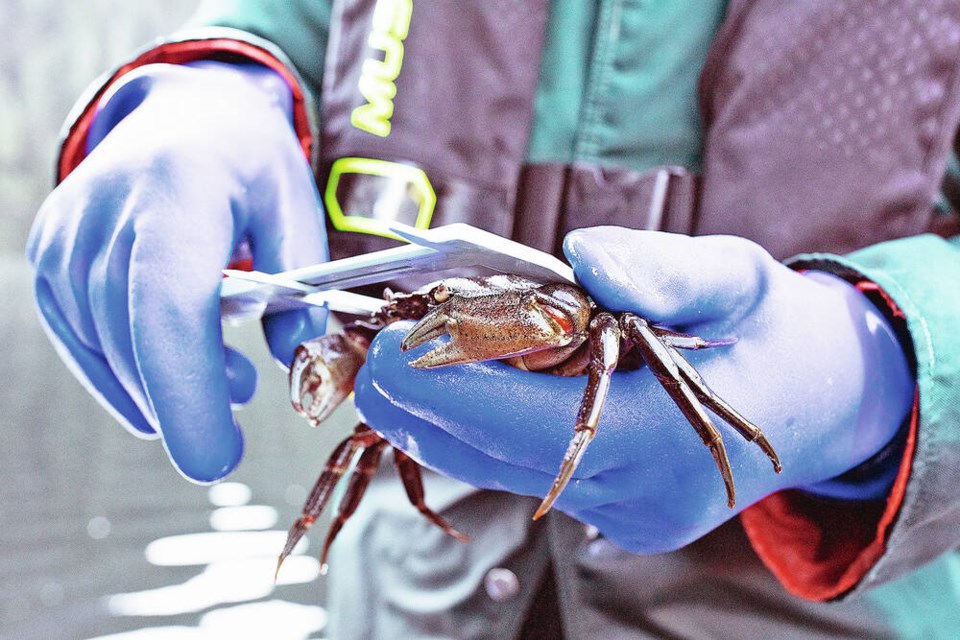The Pacific Salmon Council is receiving $750,000 in federal funding to manage the spread of the invasive European green crab.
The money, from Fisheries and Oceans Canada’s aquatic invasive species fund, will be used to increase training, and equipping and conducting early detection and monitoring of the crabs, with a focus on supporting initiatives within coastal Indigenous communities.
The funding will be spread over three years, starting this year and continuing in 2024 and 2025.
The European green crab is considered a “high priority” for the coast, according to Fisheries and Oceans Canada. Though impossible to eradicate, the agency said efforts can limit the crab’s spread and the damage it causes.
First discovered in B.C. in 1998, established populations of the crab have been found on the west coast of Vancouver Island at Barkley Sound, where First Nations and the Coastal Restoration Society are involved in extensive trapping projects. Since 2018, new infestations have been discovered on northern Vancouver Island around Port Hardy, southern Vancouver Island at Sooke and Esquimalt and Witty’s lagoons; Salt Spring Island; Ladysmith harbour; Haida Gwaii and Boundary Bay.
The European green crab is considered highly resilient and capable of upsetting marine ecosystems by destroying shellfish beds and eel grass meadows important to juvenile salmon. They also feed on native species and out-compete native Dungeness and rock crabs for food sources.
European green crabs, native to Europe and Africa and likely hitchhikers on boats to North America in the 1800s, live for up to seven years. Females can release up to 185,000 eggs once or twice per year.



